EarthWise TC70020 Le manuel du propriétaire
- Catégorie
- Mini motoculteurs
- Taper
- Le manuel du propriétaire

OWNER’S MANUAL
CORDLESS 20 VOLT CULTIVATOR LITHIUM-ION BATTERY PACK
Copyright. All Rights Reserved.
Model TC70020
Your cordless tiller has been engineered and manufactured to our high standard for dependability, ease of operation,
and operator safety. Properly cared for, it will give you years of rugged, trouble-free performance.
WARNING: To reduce the risk of injury, the user must read and understand the owner’s manual before
using this product.
Thank you for your purchase.
DO NOT RETURN THIS PRODUCT TO THE STORE. OPERATING,
ASSEMBLY, PARTS, SERVICE QUESTIONS? GO TO
WWW.AMERICANLAWNMOWER.COM OR CALL 1-800-633-1501
BETWEEN 8:00 AM—5:00 PM EST FOR ASSISTANCE.
SAVE THIS MANUAL FOR FUTURE REFERENCE
CA Compliant
Charger Included
(Model No.
CHL82000)
3189723
BATTERY MUST BE
CHARGED BEFORE FIRST
USE. TWO TO THREE INITIAL
CHARGING/ DISCHARGING
CYCLES MAY BE REQUIRED
TO ACHIEVE MAXIMUM RUN
TIME/CAPACITY.

GENERAL SAFETY
IMPORTANT SAFETY WARNINGS
TO REDUCE RISK OF INJURY:
Before any use, be sure everyone using this tool reads and
understands all safety instructions and other information contained
in this manual.
CAUTION: Wear appropriate personal hearing protection during
use. Under some conditions and duration of use, noise from this
product may contribute to hearing loss.
Save these instructions and review frequently prior to use and in
instructing others.
WARNING: When using electric gardening appliances, basic safety
precautions should always be followed to reduce risk of fire, electric
shock, and personal injury, including the following:
READ ALL INSTRUCTIONS
2
Model TC70020
CHECK FOR DAMAGED PARTS - Before further use of the
product, any part that is damaged should be carefully checked to
determine that it will operate properly and perform its intended
function. Check for alignment of moving parts, binding of moving
parts, breakage of parts, mounting and any other condition that may
affect its operation. Any part that is damaged should be properly
repaired or replaced. For assistance call our customer service help
line at 1-800-633-1501.
AVOID DANGEROUS ENVIRONMENTS - Don’t use this product in
rainy, stormy, damp or wet locations. Do not operate in gaseous or
explosive atmospheres. Motors in these products normally spark,
and the sparks might Ignite fumes.
KEEP CHILDREN AWAY - All visitors, children and pets should
stay at a safe distance from the work area.
DRESS PROPERLY- Don’t wear loose clothing or jewelry and wear
protective hair covering to contain long hair. They can be caught in
moving parts. Use of rubber gloves and substantial footwear is
recommended when working outdoors.
USE SAFETY GLASSES - Wear safety glasses with side shields
or goggles that are marked to comply with ANSI Z87.1 standard
when operating this product. Use face or dust mask if environment
is dusty.
REPLACEMENT PARTS - When servicing use only identical
replacement parts.
Don’t Force Appliance – It will do the job better and with less
likelihood of a risk of injury at the rate for which it was designed.
REMOVE THE BATTERY from the tiller/cultivator when not in use
or when servicing or cleaning. Do not leave unattended.
USE RIGHT APPLIANCE - Do not use this product for any job
except that for which it is intended.
DON’T OVERREACH - Guide the tiller/cultivator at a walking pace
only. Keep proper footing and balance at all times.
LIGHTING - Only operate your tiller/cultivator in daylight or good
artificial light.
STORE IDLE UNIT INDOORS - When not in use, the tiller/cultivator
should be stored indoors in a dry area out of children’s reach.
MAINTAIN UNIT WITH CARE - Keep clean for best performance
and to reduce the risk of injury. Inspect extension cord periodically
and replace if damaged. Keep handles dry, clean and free from oil.
Do not operate the tiller/cultivator on a slope that is too steep for
safe operation. When on slopes, slow down and make sure you
have good footing.
Before starting the tiller/cultivator make sure the times are not
touching any object and are free to move.
Grip the tiller/cultivator firmly with both hands. Never operate the
tiller/cultivator with one hand.
CAUTION: The tiller/cultivator may bounce upward and/or jump
forward if the tines strike extremely hard packed soil, frozen ground,
or buried obstacles such as large stones, roots or stumps.
STAY ALERT - Watch what you are doing. Use common sense.
Do not operate the tiller/cultivator when you are tired or under the
influence of drugs, alcohol or medication.
WARNING: Do not operate the tiller/cultivator near underground
electrical cables, telephone lines, pipes or hoses.
If the tiller/cultivator strikes a foreign body, turn it off immediately, wait
for the tines to stop and check for damage. If necessary, repair before
restarting.
If the tiller/cultivator starts to vibrate abnormally, turn it off immediately
and check for the cause. Vibration is generally a warning of trouble.
DANGER: RISK OF CUT - Wear gloves and use caution when cleaning
or performing maintenance on the tiller/cultivator.
Always turn off the tiller/cultivator, remove the battery and wait until the
tines come to a complete stop before carrying out any maintenance or
repairs.
CAUTION: Tines do not stop immediately after the tiller/cultivator is
turned off.
CAUTION: Risk of injury. Do not put hands, feet or any body part or
clothing near the rotating tines.
WARNING: California Proposition 65:
This product contains chemicals known to the State of California to
cause cancer, birth defects or other reproductive harm.
WARNING: Some dust and debris created by the use of this tool could
contain chemicals known to the State of California to cause cancer and
birth defects or other reproductive harm.
Some examples of these chemicals are:
- chemicals in fertilizers
- compounds in insecticides, herbicides, and pesticides
- arsenic and chromium from chemically treated lumber
Your risk from exposure to these chemicals varies, depending on how
often you do this type of work. To reduce your exposure, work in a
well-ventilated area and with approved safety equipment such as dust
masks that are specially designed to filter out microscopic particles.
WARNING: Cancer and Reproductive Harm -
www.P65Warnings.ca.gov.
WARNING: Do not operate the equipment while barefoot or when
wearing sandals or similar lightweight footwear. Wear protective
footwear that will protect your feet and improve your footing on slippery
surfaces.
DANGER: Don’t use tool if switch trigger does not turn on or off. Call
Customer Service at 1-800-633-1501 for assistance.
DANGER: Do not dispose of the batteries in a fire. The cell may
explode. Check with local codes for possible special disposal
instructions.
DANGER: Do not open or mutilate the batteries. Released
electrolyte is corrosive and may cause damage to the eyes or skin. It
may be toxic if swallowed.
CAUTION: Exercise care in handling batteries in order not to short the
battery with conducting materials such as rings, bracelets, and keys.
The battery or conductor may overheat and cause burns.
CAUTION: Use only the following type and size battery(ies): BL82120.

PRODUCT SPECIFICATIONS
FEATURES
Model: TC70020
Input….………………………….……………………...20V, DC Only Working width………………….7.5 in
Battery………………………………….…....20V 2.0 Ah Lithium-ion Working depth max…………….6 in
Tine Speed ………………………..…...............................170 RPM Working time…………………...30 mins per charge
Weight ………………………………………………...10 lbs. (4.6 kg)
No. Description
1
On/Off Switch
2 Safety Button
3 Auxiliary Handle
4 Upper Handle
5 Wing Nut
6 Lower Handle
No. Description
7 Side Cover
8 Tilling Head
9 Tine 1 (JY2201-1)
10 Tine 2 (JY2201-2)
11 Battery Pack
12 Charger
3
Model TC70020

ASSEMBLY
UNPACKING
This product must be assembled correctly before use.
Carefully remove the product and any accessories from
the box. Make sure that all items listed in the packing list
are included.
PACKING LIST (Fig. 2)
• Tilling head (1 piece)
• Upper and lower handle sections (1 piece)
• Auxiliary handle (1 piece)
• Wing nuts with bolts attached (2 pieces)
• ST3.9X16 screws (2 pieces)
• Side cover (1 piece)
• Battery pack (1 piece)
• Battery charger (1 piece)
• Owner’s manual (1 piece)
If any parts are damaged or missing, please call our
customer service help line at 1-800-633-1501 for
assistance.
Inspect the product carefully to make sure no breakage
or damage occurred during shipping.
Do not discard the packing material until you have
carefully inspected and satisfactorily operated the
product .
WARNING: Do not install battery until assembly is
complete. Failure to comply could result in accidental
starting and possible serious personal injury.
WARNING: If any parts are damaged or missing do not
operate this product until the parts are replaced. Failure
to heed this warning could result in serious personal
injury.
WARNING: Do not attempt to modify this product or
create accessories not recommended for use with this
product. Any such alteration or modification is misuse
and could result in a hazardous condition leading to
possible serious personal injury.
PACKING LIST
UPPER AND LOWER HANDLE SECTIONS (Fig. 3A)
• Slide the lower handle section into the upper handle
section.
• Line up the holes on each tube, and make sure the
cable is clear of the mounting holes.
• Secure the two sections together with the M6x45
carriage bolt and wing nut.
4
Model TC70020
2

AUXILIARY HANDLE (Fig. 3C)
• Position the auxiliary handle so that the holes are in alignment
with the holes in the handle support bracket.
• Insert the M6X50 hex head bolt into the hex shaped bolt hole
of the bracket.
• Secure by tightening the wing nut onto the bolt.
• Loosen the wing nut and adjust the angle and height of the
handle to a safe and comfortable position. Secure into place by
tightening the wing nut onto the bolt.
BATTERY INSTALLATION AND REMOVAL
Hold the tool and the battery firmly when installing or removing
battery.
Failure to hold the tool and the battery firmly may cause them to slip
from your hands and may result in damage to the tool and/ or bat-
tery and a personal injury.
To remove:
• Depress release button (A) on
the back of battery cartridge
(B) to release the battery.
• Pull the battery out of tool.
To install:
• Align the battery with the cavity
in the handle.
• Insert the battery into the
handle until the battery release
button locks into place. You
should hear a “click” once the battery is installed.
• Note: The battery can only be installed one way.
OPERATING
To switch ON, hold the tiller/cultivator
firmly with two hands, make sure the tines
are not touching any surface. Press the
safety button (A) while squeezing the On/
Off trigger switch (B).
Once the tiller/cultivator is started, you can
release the safety button.
To switch OFF, simply release the trigger.
ASSEMBLY
LOWER HANDLE WITH TILLING HEAD (Fig. 3B)
• Align the notch on the lower handle with the rib on the tilling
head.
• Push the lower handle into the tilling head.
• Align the side cover with the holes on the lower handle shaft
and push the cover into place.
• Secure with the two ST3.9x16 screws.
WARNING: When connecting the tilling head and lower handle
using the two self-tapping screws supplied, make sure the screws
are securely tightened. Screw heads should be recessed below the
surface. DO NOT START THE UNIT UNTIL TILLING HEAD AND
LOWER HANDLE ARE SECURELY CONNECTED.
Once the tilling head and lower handle are securely connected, do
not remove the self-tapping screws or attempt to disassemble for
any purpose. The self-tapping screws will lose their effectiveness
of securing the assembly if removed and re-installed.
STARTING:
WARNING: The tines start rotating immediately after the tiller/
cultivator is switched on. Keep hands and feet away from the
tines.
Use the tiller/cultivator for breaking sod, preparing seed beds, and for
cultivating gardens and flower beds. The tiller/cultivator can also dig
small holes for planting saplings or potted plants.
For breaking sod or deep tilling, allow the tines to pull the tiller/
cultivator forward to the end of your arm’s reach, then firmly pull it
back toward yourself. You will achieve the best results by repeatedly
allowing it to move forward and pulling it back.
By pulling the tiller/cultivator back towards yourself, the
tines will dig deeper and more aggressively.
CAUTION: To prevent tripping, take extra precautions when moving
backwards and when pulling the tiller/cultivator back toward yourself.
5
Model TC70020

If the tiller/cultivator digs deep enough to stay in one
spot, gently rock it side to side until it starts moving
forward again.
When working on inclines always stand diagonally to
the incline to retain a firm, safe footing. Do not work
on extremely steep slopes.
For preparing seed beds, we recommend using one of
these tilling patterns (Fig. 4)
Tilling Pattern A– Make two passes over area to be
tilled, the second at a right angle to the first.
Tilling Pattern B– Make two passes over area to be
tilled, the second overlapping the first.
Before use, remove any visible stones or other foreign
bodies from the area.
CAUTION: Before moving the tiller/cultivator from one
area to another switch off the motor and wait for the
tines to come to a complete stop. Be careful not to let
the tines touch the ground while moving the tiller/
cultivator. The tines as well as the unit itself may be
damaged even if the motor is switched off.
Clearing foreign objects:
During operation a stone or root could become lodged
in the tines, or tall grass or weeds may become
wrapped around the tine shaft. To clear the tines or tine
shaft release the trigger lever, wait for the tines to come
to a complete stop and unplug the tiller/cultivator.
Dislodge or remove the foreign matter from the tines or
tine shaft.
OPERATING
4
6
Model TC70020

CHARGING THE BATTERY PACK
Charge the battery pack only with the charger provided.
Allow at least 60 minutes of charge time before initial use of
the tiller/cultivator.
Make sure the power supply is normal household voltage,
120volts, 60Hz, AC only.
The battery charger should be operated in temperatures
between 39 and 104 degrees F.
The battery should be charged in a cool, dry place.
2 to 3 initial charging/discharging cycles may be required to
achieve maximum run time/capacity.
DO NOT attempt to open the charger or the unit. There are no
customer serviceable parts inside. Call customer service
helpline at 1-800-633-1501 for assistance.
DO NOT incinerate battery packs even if they are severely
damaged or completely worn out. They can explode in a fire
causing injury.
DO NOT charge appliance in rain, or in wet locations.
Use the battery charger indoors only.
Disconnect charger from the power supply when not in use to
prevent damage to the charger during a power surge.
When fully charged, the battery can be safely stored in
temperatures down to -4 degrees F for a period of up to four
weeks, before requiring charging. Fully charge battery pack
every 90 days.
If over a period of time the battery pack quickly runs down
after a full 60 minutes charging period, a replacement battery
pack is needed.
To prevent permanent damage to the battery, never store in a
discharged condition.
WINTER STORAGE - Fully recharge before storage and then
again every 90 days.
Since the battery will not develop a memory, it does not have
to be fully discharged before recharging.
A small leakage of liquid from the battery cells may occur
under extreme usage, charging or temperature conditions.
This does not indicate a failure. However, if the outer seal is
broken and this leakage gets on your skin.
a. Wash quickly with soap and water.
b. Neutralize with a mild acid such as lemon juice or
vinegar.
c. If the battery liquid gets in your eyes, flush them with
clean water for a minimum of 10 minutes and seek immediate
medical attention.
TO CHARGE - SEE CHARGER MANUAL FOR COMPLETE INSTRUCTIONS
Battery Capacity
Press the button LED displays to show the battery capacity.
LED lights Battery status
All LED are on Full charged (75-100%)
LED 1, 2, 3 are on Battery is 50%-75% charged
LED 1, 2 are on Battery is 25%-50% charged
LED 1 is on
Battery is depleted (0%-25%).
Charge the battery.
BATTERY DISPOSAL
Remove the battery pack from the tool, cover the terminals with
heavy duty adhesive tape. Do not attempt to destroy or disassemble
battery pack or remove any components. This product contains lithi-
um-ion batteries which must be recycled or disposed of properly.
Local, state or federal laws may prohibit disposal of these batteries in
the municipal solid waste or rural trash pick up systems.
Connecting battery charger
Connect battery charger to the
voltage and frequency specified
in this manual and on the rating
plate. Put the electric plug in an
earthed socket-outlet. The LED
on the battery charger lights up
green.
Connecting battery to charger
• The battery must be
charged before using it the
first time.
• Install charger on the top of
battery and push till the
charger contacts firmly with
the battery.
• The red charging light on
the charger is lit when the
battery is connected to the battery charger.
• When LED on the charger turns to green the battery is fully
charged.
• Disconnect the power plug. Never pull the power cable of the
charger to disconnect it from the wall socket.
• Remove battery from battery charger.
Note: Lithium-ion batteries can be charged at any charging level.
The charging process can be started or cancelled regardless of
the battery’s charge level is.
The RBRC seal on the Li-Ion battery pack indicates that the cost to recycle the battery pack at the end of its useful life has already
been paid by The Great States Corporation/American Lawn Mower Company. It is illegal to place spent Li-Ion batteries in the local
municipal solid waste or in the trash. RBRC in cooperation with The Great States Corporation/American Lawn Mower Company has
provided an environmentally friendly and easy way to recycle spent Li-Ion batteries. Just contact your local recycling center or call
1.800.8.BATTERY for information on where to drop off the spent battery.
7
Model TC70020

WARNING: Before carrying out maintenance operations, remove the battery from tool.
Before each use, check the condition of the tines and
ensure that all threaded connections are securely
tightened. If the tines become dull or blunt, sharpen or
replace them. Call our customer service help line at
1-800-633-1501 for assistance.
At the end of the season, check the tiller/cultivator for
damage prior to storing. Repair or replace damaged or
broken parts.
CAUTION: Always clean the tiller/cultivator after each
use. Failure to carry out proper cleaning can result in
damage to the tiller/cultivator or result in poor
performance.
Clean the tines with a scrub brush, and a soft cloth
dampened with a mild soap and water mixture.
Never use a water hose to clean the tiller! To remove
soil and debris from the tines, use a stiff brush or a
dampened cloth. Clean the vents on the motor housing
and remove any remaining grass or dirt. Once cleaned,
wipe the tines dry and apply a light coat of oil to prevent
rust.
WARNING: Injury can occur while working on the tines.
Wear protective gloves.
Tines maintenance: Worn tines invite poor performance
and overload of the motor. Check tines before each use.
Sharpen or replace the tine assemblies with new ones
when necessary. Call 1-800-633-1501 for assistance.
Tine Replacement
Tines are identified with part number JY2201-1 or
JY2201-2 stamped on the tine blade.
Replace only the tines with the identical part number.
Tine Removal (Fig. 5)
1. Remove the M8 hex locknut with a hex head wrench,
and then remove the M8x170 bolt.
2. Remove the end caps.
3. Remove the tines and hubs at either end of the shaft.
Tine Installation (Fig. 5)
1. Install the new tine by pressing it onto the hub. The side
with stamped part number must face outward. Be sure to
install tines in the same sequence as shown in Fig 5.
Position the hub so that the larger diameter whole is facing
outward. Make sure the two tines on the same hub are
installed symmetrically with the end of the tine blades
facing downward (Fig. 6).
2. Install the tines with hub onto the shaft. Ensure the larger
diameter whole of the hub is facing outward. The left and
right tine assemblies must be installed symmetrically
(Fig. 6)
3. Install the end caps.
4. Install the M8x170 bolt. Secure the assembly by
tightening the M8 hex locknut with a hex head wrench.
Replace worn or damaged parts with original replacement
parts only. Parts from another tiller/cultivator may not fit
properly causing an unsafe situation.
Make sure all protective devices are secure and in good
condition. Repair or replace if necessary.
MAINTENANCE
Tine P/N
JY2201-1
Tine P/N
JY2201-2
Tine P/N
JY2201-1
Tine P/N
JY2201-2
Hub
Hub
End Cap
End Cap
M8x170
Bolt
M8 Hex
Locknut
Bushing
Bushing
Symmetrically
installed tine blades
facing downward
Larger diameter
whole of the hub
facing outward
Shaft
5
6
8
Model TC70020

TROUBLESHOOTING
Call us first with questions about operating or maintaining your product
at 1-800-633-1501 between 8:00 a.m. – 5:00 p.m. Eastern Standard Time,
or get assistance on www.americanlawnmower.com.
CALL US FIRST !!
Problem Possible Couse Possible Solution
-Unit does not Run -Battery not making contact -Check battery is fully inserted
-Trigger switch not operational -Check that lock off button is fully depressed prior to moving trigger
-Battery not installed properly -Check battery installation
-Battery not charged -Check battery charging requirements
Abnormal noises
-Tine is jammed.
-Bolts, nuts or other components are loose.
-Switch off. Wait till tines comes to a complete stop. Remove jammed
objects.
-Tighten all components. Arrange for repair if noises continue.
Abnormal vibrations
-Tines damaged or worn
-Working depth too large
-Replace damaged or worn tines.
-Adjust working depth.
-Battery will not charge -Battery not inserted into charger -Insert battery into charger until red LED appears
-Charger not plugged in -Plug charger into a working outlet
-Check current at receptacle by plugging in a lamp or other appliance
-Check to see if receptacle is connected to a light switch which turns
power off when you turn out the lights
-Surrounding air temperature too hot or too cold -Move charger and tool to a surrounding air temperature of about 39
degree F (4 degree C) or below 104 degree F (+40 degree c)
Poor results
Working depth too small
Worn tines
Adjust working depth.
Replace damaged or worn tines.
STORAGE
Store the Tiller/Cultivator in a dry, clean area out of reach of
children.
During extended periods of storage, ensure that the tiller/
cultivator is protected against corrosion and rust.
At the end of the season, or if the tiller/cultivator is not being
used for longer than a month, wipe over all metal surfaces
with an oil impregnated cloth to protect them from corrosion
or spray with a fine coat of oil.
Do not expose to rain. Store indoors.
For parts or service, please call 1-800-633-1501 or visit us online at www.americanlawnmower.com. Be
sure to provide all relevant information when you call or visit.
REPAIR PARTS (KITS/ ITEMS)
The model number of this tool is found on a plate or label attached to the housing. Please record the serial
number in the space provided below.
MODEL NUMBER TC70020_____
SERIAL NUMBER_______________
No. Kit/ Item Number Description QTY
1 RTC70020/25-FHK Front Handle Kit 1
2 RTC70020/25-TK-1 Tine Kit 1
3 BL82120 Battery Pack 1
4 CHL82000 Charger 1
Always mention the model number when ordering kits/items for this tool.
9
Model TC70020

In a continued commitment to improve quality, the Manufacturer reserves the
right to make component changes or design changes when necessary.
Rev. 11/26/19
OWNER’S MANUAL
CORDLESS 20 VOLT CULTIVATOR LITHIUM-ION BATTERY PACK
Copyright. All Rights Reserved.
Model TC70020
WARRANTY POLICY
Earthwise warrants to the original owner that each new product and service part is free from defects in
materials and workmanship and agrees to repair or replace any defective product or part for the warranty
period as stated above from the original date of purchase except for the conditions and circumstances listed
below:
Two (2) year limited warranty on Earthwise 20 volt outdoor power equipment and one (1) year limited
warranty on Earthwise 20 volt battery packs and chargers.
This warranty applies only to the original purchaser at retail and
may not be transferred.
Warranty applies if the product is used for personal, household
or family use. Warranty is void if product is used for commercial,
industrial or rental purposes.
Warranty does not include repairs necessary due to operator’s
abuse or negligence (including overloading the product beyond
capacity or immersion in water), or the failure to assemble,
operate, maintain or store the product according to the
instructions in the owner’s manual.
This warranty is not transferable and
only applies to product sold directly
from an authorized retailer. This warranty
does not apply to any product, new or used, purchased through
unauthorized third-party channels.
ANY INCIDENTAL, INDIRECT OR CONSEQUENTIAL LOSS,
DAMAGE, OR EXPENSE THAT MAY RESULT FROM ANY
DEFECT, FAILURE OR MALFUNCTION OF THE PRODUCT IS
NOT COVERED BY THE WARRANTY. Some states do not
allow the exclusion or limitation on how long an implied warranty
lasts, so the above limitation may not apply to you.
Products sold damaged or incomplete, sold “as is”, or sold as
reconditioned are not covered under the warranty.
Damage or liability caused by shipping, improper handling, improper
assembly, incorrect voltage, improper wiring, improper maintenance,
improper modification or the use of accessories and/or attachments not
specifically recommended is not covered by this warranty.
Expendable items that become worn during normal use are not covered
by the warranty.
Warranty does not cover damage caused by cold, heat, rain, excessive
humidity, corrosive environments and materials, or other contaminants.
Warranty does not include installation, assembly or normal adjustments
explained in the operator’s manual.
The expense of delivering the product to the vendor and the expense of
returning the product or replacement parts to the owner is not covered
by the warranty.
The warranty does not cover normal deterioration of the exterior finish,
including but not limited to scratches, dents, paint chips or any
corrosion or discoloration caused by heat, abrasive and chemical
cleaners.
Proof of purchase, original dated sales receipt, must accompany
all warranty claims.
American Lawn Mower Company
The Great States Corporation
7444 Shadeland Station Way
Indianapolis, IN 46256 USA
Phone 1-800-633-1501
www.americanlawnmower.com

MANUAL DEL PROPIETARIO
CULTIVADOR CON PAQUETE DE BATERÍAS DE IONES DE LITIO DE 20V
Copyright. Todos los derechos reservados.
Modelo TC70020
Su desbrozadora fue diseñada y fabricada de acuerdo con nuestros altos estándares de confiabilidad, facilidad de
operación y seguridad para el operario. Si se la trata con cuidado, le otorgará años de óptimo rendimiento y
resistencia.
ADVERTENCIA: para reducir el riesgo de sufrir alguna lesión, el usuario debe leer y comprender el manual
del propietario antes de usar este producto.
Muchas gracias por su compra.
NO DEVUELVA ESTE PRODUCTO A LA TIENDA. ¿TIENE PREGUNTAS
SOBRE EL FUNCIONAMIENTO, EL MONTAJE, LAS PIEZAS O EL
MANTENIMIENTO? IR A WWW.AMERICANLAWNMOWER.COM, O
Llame al 1-800-633-1501 ENTRE LAS 8:00 Y LAS 17:00 H, HORA
ESTÁNDAR DEL ESTE, PARA OBTENER ASISTENCIA.
GUARDE ESTE MANUAL PARA CONSULTAS FUTURAS
Cargador Cumple
con CA está incluido
(Modelo No.
CHL82000)
3189723
DEBE CARGAR LA BATERÍA
ANTES DE UTILIZARLA POR
PRIMERA VEZ. ES POSIBLE
QUE SE NECESITEN DE DOS A
TRES CICLOS DE CARGA/
DESCARGA INICIALES PARA
OBTENER LA MÁXIMA
CAPACIDAD O TIEMPO DE
FUNCIONAMIENTO.

PARA REDUCIR EL RIESGO DE LESIONES: Antes de utilizar este
producto, cerciórese de que todos los usuarios lean y comprendan las
instrucciones de seguridad y la demás información incluida en este manual.
PRECAUCIÓN: Use protección auditiva apropiada mientras trabaja. En
ciertas condiciones y con cierta duración de uso, el ruido generado por este
producto puede contribuir a la pérdida de la audición.
Guarde estas instrucciones y revíselas con frecuencia antes de usarlas e
instruir a otros.
ADVERTENCIA: Al utilizar aparatos eléctricos para el jardín, se
recomienda respetar las precauciones de seguridad básicas que se
detallan a continuación, a fin de reducir riesgos de incendios, descargas
eléctricas y lesiones personales.
LEA TODAS LAS INSTRUCCIONES
VERIFIQUE LAS PIEZAS DAÑADAS. Antes de seguir usando el
producto, se deberán revisar las piezas dañadas en forma exhaustiva
para determinar si la herramienta funcionará correctamente y realizará
el trabajo previsto. Compruebe la alineación y las uniones de las piezas
móviles, el montaje, averías de componentes y otros factores que
puedan afectar el funcionamiento. Se debe reparar o reemplazar
cualquier pieza dañada en forma adecuada. Para recibir asistencia,
comuníquese con nuestra línea de ayuda de atención al cliente al 1-800-
633-1501.
EVITE AMBIENTES PELIGROSOS. No utilice este producto en
condiciones de lluvia o tormenta ni en lugares húmedos o mojados.
Tampoco trabaje en entornos donde existan gases o sustancias
explosivas. Por lo general, los motores de estos productos producen
chispas que podrían inflamar los gases.
MANTENGA ALEJADOS A LOS NIÑOS. Todos los visitantes, niños y
mascotas deben mantenerse a una distancia segura de la zona de
trabajo.
USE ROPA ADECUADA. No use prendas sueltas ni artículos de
joyería. Use protección para cubrir y contener el cabello largo ya que
puede quedar atrapado en las piezas móviles. Se recomienda usar
guantes de goma y calzado resistente cuando se trabaja al aire libre.
USE GAFAS DE SEGURIDAD. Al trabajar con este producto, use
gafas de seguridad con protectores laterales que cumplan con la norma
ANSI Z87.1. Protéjase la cara con una mascarilla antipolvo si hay polvo
en el ambiente.
PIEZAS DE REPUESTO - Al dar servicio, sólo utilice piezas de
repuesto idénticas.
NO FUERCE EL ROTOCULTIVADOR. Realizará mejor el trabajo con
menor probabilidad de lesiones si maneja la desbrozadora a la veloci-
dad para la que fue diseñada.
RETIRE LA BATERÍA del cultivador cuando no esté en uso o durante
el mantenimiento o la limpieza. Manténgala bajo vigilancia constante.
USE LA HERRAMIENTA CORRECTA. No utilice este producto en
trabajos para los que no esté indicado.
NO ADOPTE UNA POSTURA INCÓMODA. Guíe el rotocultivador sólo a
paso de hombre. Mantenga una base de apoyo firme y buen equilibrio en todo
momento.
ILUMINACIÓN. Trabaje con el rotocultivador sólo con luz natural o
buena luz artificial.
GUARDE LA UNIDAD BAJO TECHO. Cuando no esté en uso, el
rotocultivador se deberá guardar en un lugar cerrado y seco, fuera del
alcance de los niños.
PRESTE ATENCIÓN AL MANTENIMIENTO DE LA UNIDAD.
Consérvela limpia para lograr un óptimo funcionamiento y reducir el
riesgo de lesiones. Inspeccione el cable de extensión periódicamente y
reemplácelo si está dañado. Mantenga los mangos secos, limpios y
libres de aceite.
Para un funcionamiento seguro, no utilice el rotocultivador en pendientes
demasiado pronunciadas. Cuando trabaje en pendientes, disminuya la
velocidad y asegúrese de tener una buena base de apoyo.
Antes de encender el rotocultivador, cerciórese de que las púas no
estén en contacto con ningún objeto y de que tengan libre movimiento.
Sujete el rotocultivador con ambas manos y con firmeza. No debe sujetarla
nunca con una sola mano.
PRECAUCIÓN: El rotocultivador puede rebotar hacia arriba o saltar hacia
delante si las púas golpean suelo muy compactado o congelado, u
obstáculos enterrados, como piedras grandes, raíces o tocones.
ADVERTENCIAS DE SEGURIDAD IMPORTANTES
NORMAS GENERALES DE SEGURIDAD
ADVERTENCIA: No trabaje con el rotocultivador cerca de cables
eléctricos, líneas telefónicas, tuberías o mangueras subterráneas.
Si el rotocultivador golpea un cuerpo extraño, apáguelo de inmediato,
espere a que las púas se detengan y verifique si hay daños. Si fuera
necesario, repare las piezas dañadas antes de volver a poner en
marcha la herramienta.
Si el rotocultivador comienza a vibrar de manera inusual, apáguelo de
inmediato y revíselo para detectar la causa. Generalmente, lavibración
advierte la existencia de un problema.
PELIGRO: RIESGO DE CORTES. Use guantes y sea prudente cuando
limpie o realice el mantenimiento al rotocultivador.
Siempre apáguelo; retire la batería y espere hasta que las púas se
detengan por completo antes de realizar tareas de
mantenimiento o reparaciones.
PRECAUCIÓN: Las púas no se detienen de inmediato cuando se apaga
el rotocultivador.
PRECAUCIÓN: Riesgo de lesiones. No acerque ninguna parte de su
cuerpo, ni prendas de vestir a las púas giratorias.
ADVERTENCIA: Proposición 65 de California:
Este producto contiene sustancias químicas al estado de California como
causantes de cáncer, defectos de nacimiento u otros problemas
reproductivos .
ADVERTENCIA: Parte del polvo y los desechos generados por el uso de
esta herramienta contienen químicos reconocidos por el Estado de
California como causantes de cáncer, defectos de nacimiento u otros
efectos nocivos para el aparato reproductor.
Algunos ejemplos de estos productos químicos son:
- químicos presentes en fertilizantes
- compuestos presentes en insecticidas,
herbicidas y pesticidas
- arsénico y cromo de maderas tratadas
químicamente
El riesgo que usted corre al exponerse a estos
químicos varía según la frecuencia con la que
realiza este tipo de trabajo. Para reducir la
exposición, trabaje en una zona bien ventilada y utilice equipo de
protección aprobado, como mascarillas antipolvo especialmente
diseñadas para filtrar partículas microscópicas.
ADVERTENCIA: Cáncer y Daño Reproductivo -
www.P65Warnings.ca.gov.
ADVERTENCIA: No accione el equipo cuando esté descalzo o al llevar
puestas sandalias o calzado liviano similar. Use calzado de seguridad que
le proteja sus pies y mejore su postura en superficies resbaladizas.
PELIGRO: No utilice la herramienta si el interruptor no enciende o no
apaga. Comuníquese con nuestra línea de ayuda de atención al cliente al
1-800-633-1501 para recibir
PELIGRO: No deseche las baterías en el fuego. Las baterías pueden
estallar. Verifique los códigos de la localidad para conocer posibles
instrucciones especiales para desecharlas.
PELIGRO: No desarme el paquete de baterías. El electrolito emitido es
corrosivo y puede causar daños en los ojos y en la piel. Puede ser tóxico
si se ingiere.
PRECAUCIÓN: Tenga cuidado cuando maneje baterías a fin de no
realizar un cortocircuito en la batería con materiales conductores como
anillos, brazaletes y llaves. La batería o el conductor pueden recalentarse
y provocar quemaduras.
PRECAUCIÓN: Utilice únicamente el siguiente tipo y tamaño de batería:
BL82120.
2
Modelo TC70020

ESPECIFICACIONES DEL PRODUCTO
Modelo: TC70020
CARACTERÍSTICAS
Entrada ….………………………….…20V CC solamente
Baterías ……...………………………. 20V 2.0 Ah Iones de litio
Velocidad de las púas: ………………170 RPM
Peso ………………………..………….4.6 kg (10 libras)
Ancho de trabajo..............................190 mm (7,5 pulg.)
Profundidad máx. de trabajo............155 mm (6 pulg.)
Tiempo de trabajo ………………… .30 minutos por carga
N.°
Descripción (N.º de pieza)
N.°
Descripción (N.º de pieza)
1 Interruptor de encendido/apagado 7 Cubierta lateral
2 Botón de bloqueo de seguridad 8 Cabezal de labrado
3 Mango auxiliar completo 9
Púa 1 (JY2201-1)
4
Mango superior
10
Púa 2 (JY2201-2)
5 Tuerca de mariposa 11 Batería
6
Mango inferior
12 Cargador
3
Modelo TC70020

MONTAJE
DESEMBALAJE
Este producto debe ser montado correctamente antes de su uso.
Extraiga la herramienta de la caja con cuidado. Asegúrese de que
estén incluidos todos los elementos detallados en la lista de
embalaje.
LISTA DE EMBALAJE (Fig. 2)
• Cabezal de labrado (1)
• Secciones superior e inferior del mango (1)
• Mango auxiliar completo (1)
• Tuercas mariposa con pernos incluidos (2)
• Tornillos ST3.9X16 (2)
• Cubierta lateral (1)
• Batería (1)
• Cargador de batería (1)
• Manual de funcionamiento (1)
Si alguna pieza falta o está dañada, llame al 1-800-633-1501 para
obtener asistencia.
Inspeccione el producto detenidamente para corroborar que
no existan roturas ni averías ocurridas durante el envío.
No deseche el material de embalaje hasta haber
inspeccionado exhaustivamente el producto y comprobar que
funciona en forma satisfactoria.
ADVERTENCIA: no instale la batería hasta haber completado
el montaje. De lo contrario, la máquina podría arrancar
accidentalmente y provocar lesiones personales de gravedad.
ADVERTENCIA: si alguna pieza falta o está dañada, no utilice
este producto hasta reponer la pieza en cuestión. De lo
contrario, podría sufrir lesiones corporales serias.
ADVERTENCIA: No intente modificar la unidad ni elaborar
accesorios no recomendados para usar con este producto. Dicha
clase de alteración o modificación constituye un uso inadecuado
de la herramienta y podría generar situaciones de riesgo y
provocar lesiones personales de gravedad.
LISTA DE EMPAQUE
SECCIONES SUPERIOR E INFERIOR DEL MANGO
(Fig. 3A)
Deslice la sección inferior en la sección superior.
Alinee los orificios de cada tubo y asegúrese de que el cable
no obstruya los orificios de montaje.
Sujete las dos secciones con el perno de carruaje (6 x 45) y
tuerca de mariposa.
1-Batería
1-Cargador de batería
1-cabeza de labranza
1-Sección de mango superior e
inferior
1-Mango auxiliar completo
2-3.9X16
Empulgueras
1-M6X50 perno de
cabeza hexagonal
1-M6X45 tornillo
hexagonal
2-Tuerca de mariposa
1-Manual de funcionamiento
1-Cubierta
lateral
3A
2
4
Modelo TC70020

MONTAJE
MANGO INFERIOR CON CABEZAL DE LABRADO
(Fig. 3B)
• Alinee la muesca en el mango inferior con los bordes
en el cabezal de labrado y presione el mango inferior
hacia el cabezal de labrado.
• Alinee la cubierta lateral con los orificios en el eje del
mango inferior y presione la cubierta hacia su lugar.
• Asegure con los dos tornillos ST3.9x16.
ADVERTENCIA: Al conectar la cabeza del rotocultivador
y la manija inferior con los dos tornillos autoperforantes
suministrados, asegúrese de que los tornillos estén bien
ajustados. Las cabezas de los tornillos deben
estar´empotradas debajo de la superficie. NO PONGA EN
FUNCIONAMIENTO LA UNIDAD HASTA QUE LA
CABEZA DEL ROTOCULTIVADOR Y LA MANIJA
INFERIOR ESTÉN CONECTADAS DE MANERA
SEGURA.
Una vez que la cabeza del rotocultivador y la manija estén
conectadas de manera segura, no extraiga los tornillos
autoperforantes ni intente desarmarlos bajo ningún
motivo. Si se retiran y se vuelven a instalar, los tornillos
autoperforantes perderán su eficacia para asegurar el
ensamble.
MANGO AUXILIAR (Fig. 3C)
• Coloque el mango auxiliar de manera que los orificios estén
alineados con los orificios del soporte del mango.
• Inserte el perno con cabezal hexagonal M6X50 en el orificio del
perno con cabezal hexagonal del soporte.
• Sujete ajustando la perilla en el perno.
• Afloje la perilla y levante el mango a la posición de
funcionamiento. Ajuste la altura del mango a una posición
segura y cómoda y fíjelo con la perilla.
INSTALACIÓN Y REMOCIÓN DE LA BATERÍA
Sostenga la herramienta y la batería con firmeza cada vez que la instale o
la remueva.
Si fallara en sostener la herramienta y la batería con firmeza, esto podría
causar que la batería se resbalara de sus manos, lo que podría resultar
en daños a la herramienta, a la batería y lesiones personales.
Para remover:
• Presione el botón de liberación (A) en
la parte posterior del cartucho de la
batería (B) para liberar la batería.
• Remueva la batería de la herramienta.
Para instalar:
• Alinee la batería con la cavidad en el
mango,
• Inserte la batería en el mango hasta
que el botón de liberación de la
batería encaje en su lugar. Debería oír un “clic” una vez que la
batería esté instalada.
• Nota: La batería solo se puede instalar en una dirección.
FUNCIONAMIENTO
ENCENDIDO:
ADVERTENCIA: Las púas comienzan a girar
inmediatamente después de que se enciende el
rotocultivador. Mantenga manos y pies alejados de las púas.
Para ENCENDER la máquina, mantenga el
rotocultivador de manera firme con las dos
manos, asegúrese de que las púas no
toquen ninguna superficie. Presione el
botón de bloqueo de seguridad (A)
mientras presiona el interruptor del gatillo
(B) de encendido/apagado.
Una vez que el rotocultivador de nieve está
en marcha puede soltar el botón de
bloqueo de seguridad.
Para apagar, simplemente suelte el gatillo.
Utilice el rotocultivador para cavar el césped, preparar semilleros, y
para cultivar jardines y canteros de flores. Esta herramienta también
puede cavar pequeños pozos para plantar vástagos o plantas en
macetas.
Para cavar el césped o labrar en profundidad, deje que las púas
tiren el rotocultivador hacia delante hasta el extremo del alcance
de su brazo, luego tírelo firmemente hacia usted. Obtendrá los
mejores resultados si deja que la herramienta avance y retroceda
repetidamente.
Al tirar el rotacultivador hacia usted, las púas cavarán con más
profundidad y más intensidad.
PRECAUCIÓN: Para evitar que se desconecte, tome
precauciones adicionales al moverse hacia atrás y al tirar el
rotocultivador hacia usted.
5
Modelo TC70020

Si el rotocultivador cava lo suficientemente profundo para
mantenerse en un solo lugar, muévalo suavemente
de un lado hacia otro hasta que comience a avanzar
otra vez.
Cuando trabaje en pendientes, siempre párese en
diagonal con respecto a la inclinación para conservar
una base de apoyo firme y segura. No trabaje en
pendientes demasiado pronunciadas.
Para preparar semilleros, recomendamos usar
estos patrones de labranza (Fig. 4):
Patrón de labranza A: Realice dos pasadas sobre el
área a ser labrada, la segunda en ángulo recto con
respecto a la primera.
Patrón de labranza B: Realice dos pasadas sobre el
área a ser labrada, la segunda superpuesta a la
primera.
Antes de usar, retire las piedras u otros cuerpos
extraños visibles del área.
PRECAUCIÓN: Antes de mover el rotocultivador de un
área a otra, desconecte el motor y espere a que las púas
se detengan por completo. Sea cuidadoso y evite que las
púas toquen el suelo cuando mueva el rotocultivador. Las
púas y también la unidad pueden dañarse aún cuando el
motor está desconectado.
Quitar los objetos extraños:
Durante la operación, es posible que queden piedras o
raíces atascadas en las púas, o que queden
pastos altos o malezas en el eje de las púas. Para
despejar las púas o su eje, suelte la palanca del gatillo,
espere a que las púas se detengan por completo y
desenchufe el rotocultivador. Desplace o retire las
sustancias extrañas de las púas o de su eje.
FUNCIONAMIENTO
4
6
Modelo TC70020

CARGA DEL PAQUETE DE BATERÍAS
CONSULTE LAS INSTRUCCIONES COMPLETAS EN EL MANUAL DEL CARGADOR
Cargue el paquete de baterías únicamente con el cargador provisto.
Deje por lo menos 60 minutos de tiempo de carga antes del primer
uso de la cultivador.
Asegúrese de que el voltaje del suministro eléctrico sea el doméstico
normal: 120 voltios, 60 Hz, CA únicamente.
El cargador de baterías debe funcionar en temperaturas que oscilen
entre los 4 y 40 ºC (39 y 104 ºF).
La batería debe cargarse en un lugar fresco y seco.
Es posible que se necesiten de dos a tres ciclos de carga/
descarga iniciales para obtener la máxima capacidad o tiempo
de funcionamiento.
No intente abrir el cargador ni la unidad, ya que en su interior no
existen piezas que el usuario pueda reparar. Comuníquese con
nuestra línea de ayuda de atención al 1-800-633-1501 para recibir
asistencia.
NO incinere los paquetes de baterías, aunque estén muy dañados o
totalmente agotados, porque pueden estallar y provocar lesiones.
Utilice el cargador de baterías sólo bajo techo.
Desconecte el cargador del suministro eléctrico cuando no esté
en uso para evitar daños en caso de que se produzca un pico de
tensión.
Cuando la batería está cargada por completo, se puede almacenar
de forma segura en temperaturas de hasta –20 ºC (-4 ºF) durante un
período de quatros semanas antes de que requiera una nueva carga.
Cargue el paquete de baterías completamente cada 90 días.
Si transcurrido un tiempo determinado, el paquete de baterías se
agota rápidamente después de un período de carga de 60 minutos,
es necesario un cambio de batería.
Para prevenir un daño permanente a la batería, nunca la almacene
descargada.
ALMACENAMIENTO EN INVIERNO. Recargue la batería
completamente durante 60 minutos antes de guardarla y repita la
operación cada 90 días.
Debido a que la batería no tiene ningún efecto memoria, no es
necesario que esté totalmente descargada para volver a cargarla.
Es posible que ocurra una pequeña pérdida de líquido de las pilas
en condiciones de uso, carga o temperaturas extremas. Esto no
indica una falla. No obstante, si el sello externo está roto y el líquido
entra en contacto con la piel:
a. Lávese con agua y jabón de inmediato.
b. Neutralice el efecto con un ácido débil como jugo de limón
o vinagre.
c. Si el líquido de la batería penetra en los ojos, enjuáguese con
agua limpia durante un mínimo de 10 minutos y obtenga
asistencia médica inmediata.
Nivel de la batería
Al presionar el botón, las luces LED mostrarán el nivel de la batería.
Presiona
el botón
Luces LED Estado de la batería
Todos los LED
encendidos
Completamente cargada (75-100%)
LED 1, 2, 3 encendidos Batería cargada al 50%-75%
LED 1, 2 encendidos Batería cargada al 25%-50%
LED 1 encendido
Batería descargada (0%-25%).
Cargue la batería.
ELIMINACIÓN DE LA BATERÍA
Extraiga el paquete de baterías de la utillaje. Cubra los terminales con
una cinta adhesiva resistente. No trate de destruir ni desarmar el
paquete de baterías ni de extraer ninguno de sus componentes. Este
producto contiene baterías de litio-ion, que se deben reciclar o
desechar adecuadamente. Es posible que las leyes locales, estatales
o federales prohíban eliminar estas baterías con los desechos
comunes.
Cómo conectar el cargador de la batería
Conecte el cargador de la batería
a una línea de voltaje y
frecuencia iguales a los
especificados en este manual y
en la placa de características.
Coloque el conector en una toma
de corriente conectada a tierra.
El LED del cargador de la batería
debe encenderse con una luz de
color verde.
Cómo conectar la batería al cargador
• La batería debe estar
cargada antes del primer
uso.
• Coloque el cargador sobre
la batería y presione hasta
que el mismo esté
firmemente conectado a la
batería.
• La luz roja de carga iniciada
del cargador debe encenderse cuando la batería se conecta al
cargador.
• Cuando el LED del cargador cambie del rojo al verde, la batería
estará completamente cargada.
• Desconecte el conector. Nunca hale el cable del cargador para
desconectarlo de la toma de corriente.
• Remueva la batería del cargador.
Nota: Las baterías de ion de litio se pueden cargar sin importar el
nivel de carga que posean. El proceso de carga puede ser iniciado o
detenido sin importar el nivel de carga alcanzado.
El sello RBRC que aparece en el paquete de baterías de litio-ion indica que los costos para reciclarlo al término de su vida útil
ya han sido pagados por The Great States Corporation/American Lawn Mower Company. Es ilegal arrojar las baterías de
litio-ion gastadas en un depósito municipal de residuos sólidos o en la basura. RBRC, en colaboración con The Great States
Corporation/American Lawn Mower Company, ofrece una forma fácil y ecológica de reciclar las baterías de litio-ion gastadas.
Simplemente comuníquese con un centro de servicio autorizado de Earthwise™, el centro de reciclaje local o llame al
1.800.8.BATTERY para obtener información sobre dónde dejar las baterías gastadas.
CARGA DEL PAQUETE DE BATERÍAS
7
Modelo TC70020

ADVERTENCIA: Antes de realizar tareas de mantenimiento, retire la batería de la herramienta
Antes de cada uso, inspeccione el estado de las púas y
asegúrese de que todas las conexiones roscadas estén
firmemente ajustadas. Si las púas se desafilan, afílelas o
reemplácelas. Comuníquese con nuestra línea de ayuda
de atención al cliente al 1-800-633-1501 para recibir
asistencia.
Al final de la estación, inspeccione el rotocultivador para
detectar daños antes de guardarlo. Repare o reemplace
las piezas dañadas o rotas.
PRECAUCIÓN: Limpie siempre el rotocultivador
después de cada uso. Si no se realiza una correcta
limpieza del rotocultivador, éste podría dañarse o no
funcionar correctamente.
Limpie las púas con un cepillo de fregar, y un paño
suave humedecido con una mezcla de agua y jabón
suave. No utilice una manguera con agua para
limpiar el rotocultivador. Para quitar la tierra y los
residuos de las púas, utilice un cepillo rígido o un paño
húmedo. Limpie las ventilaciones de la caja del motor y
retire los restos de césped o suciedad. Después de
limpiarlos, seque las púas, y aplique una capa fina de
aceite para evitar el óxido.
ADVERTENCIA: Se pueden producir lesiones
mientras se trabaja con las púas. Utilice guantes
de protección.
Mantenimiento de las púas: Las púas gastadas
producen malos resultados y sobrecargan el motor.
Inspeccione las púas antes de cada uso. Afile o
reemplace las púas gastadas por nuevas, cuando sea
necesario. Llame al 1-800-633-1501 para obtener
asistencia.
Reemplazo de las púas
Las púas están identificadas con el número de pieza
JY22201-1 o JY2201-2 estampado en la cuchilla de las
púas.
Reemplace solo las púas por otras con el mismo
número de pieza.
Extracción de púas (Fig. 5)
1. Quite la tuerca de fijación hexagonal M8 con una llave
hexagonal y luego extraiga el perno M8x170.
2. Extraiga las tapas de los extremos.
3. Extraiga las púas y los nodos de cada extremo del eje.
Instalación de púas (Fig. 5)
1. Instale la púa nueva presionándola contra el eje. El lado
con el número de pieza debe mirar hacia afuera.
Cerciórese de instalar las púas en la misma secuencia que
se muestra en la Fig. 5. Coloque el nodo de manera que el
diámetro más largo esté orientado hacia afuera.
Asegúrese de que las dos púas del mismo nodo estén
instaladas simétricamente con el extremo de las
cuchillas de las púas hacia abajo (Fig. 6).
2. Instale las púas con el nodo hacia el eje. Asegúrese de
que el diámetro más largo del nodo orientado hacia afuera
Los ensambles de las púas izquierda y derecha deben
están instaladas simétricamente (Fig. 6).
3. Instale las tapas de los extremos.
4. Instale el perno M8x170. Asegure el ensamble el
ajustar la tuerca de fijación hexagonal M8 con una llave
hexagonal.
Reemplace las piezas gastadas o dañadas sólo con
piezas de repuesto originales. Las piezas
provenientes de otro rotocultivador pueden no
adaptarse adecuadamente, lo que provocaría una
situación de inseguridad.
Cerciórese de que todos los dispositivos de protección estén
bien firmes y en buenas condiciones. Repare o reemplácelos,
si fuera necesario.
MANTENIMIENTO
Cuchillas de las
púas instaladas
simétricamente
hacia abajo
Diámetro más largo
del nodo orientado
hacia afuera
Púa P/N
JY2201-1
Púa P/N
JY2201-2
Perno
M8x170
Extremo
final
Cubo
Buje
Eje
Buje
Púa P/N
JY2201-1
Púa P/N
JY2201-2
Extremo
final
Tuerca de fijación hexagonal M8
Cubo
6
5
8
Modelo TC70020

MANTENIMIENTO
SOLUCIÓN DE PROBLEMAS
Problema Posible causa Posible solución
La unidad no funciona. -La batería no hace contacto. - Verifique que la batería esté bien colocada.
-El botón de bloqueo no está en la posición
correcta
- Compruebe que el botón de bloqueo se encuentre totalmente hacia
adelante antes de accionar el gatillo.
-La batería no está instalada correctamente. - Controle la instalación de la batería.
-La batería no está cargada. - Revise los requisitos de carga de la batería.
Ruidos extraños -La cuchilla está atascada -Apague la unidad. Espere hasta que las púas se
detengan por completo. Quite los objetos atascados.
-Pernos, tuercas u otros componentes flojos -Ajuste bien todos los componentes. Disponga la
reparación si persisten los ruidos.
Vibraciones inusuales -Las cuchillas están dañadas o gastadas -Reemplace las cuchillas dañadas o gastadas.
-La profundidad de trabajo es demasiado
grande
-Fije a la profundidad de trabajo correcta.
La batería no se carga. -La batería no está bien colocada en el
cargador.
- Coloque nuevamente la batería en el cargador hasta que aparezca
una luz roja en el indicador LED.
-El cargador no está enchufado. - Enchufe el cargador en un tomacorriente que funcione.
- Compruebe la corriente en el receptáculo; para ello enchufe una
lámpara u otro artefacto.
- Asegúrese de que el receptáculo no esté conectado a un interruptor
de luz que corta el suministro eléctrico cuando usted apaga las luces.
-La temperatura del aire en el ambiente es muy
baja o muy elevada.
- Traslade el cargador y la herramienta a un lugar con una
temperatura ambiente superior a los 4ºC (39ºF) e inferior a 40ºC
(104ºF).
Resultados no deseados -La profundidad de trabajo es demasiado
reducida
-Cuchillas gastadas
-Fije a la profundidad de trabajo correcta.
-Reemplace las cuchillas dañadas o gastadas.
Para solicitar repuestos o servicio técnico, llame al 1-800-633-1501 o visite nuestra página web
www.americanlawnmower.com. Asegúrese de proporcionar toda la información relevante cuando nos llame o visite.
REPUESTOS (KITS / ARTÍCULOS)
El número de modelo/ de serie de esta herramienta se encuentra en una placa o etiqueta adjunta a la caja. Registre el
número de serie en el espacio provisto a continuación.
MODELO N.º TC70020_____
NÚMERO DE SERIE________________
Mencione siempre el serial del modelo cuando ordene kits para el mismo.
N.° Número de kit/
Número de artículo
Descripción Cantidad
1 RTC70020/25-FHK Kit de manija delantera 1
2 RTC70020/25-TK-1 Kit de dientes 1
3 BL82120 Batería 1
4 CHL82000 Cargador 1
¡LLÁMENOS PRIMERO!
Si tiene preguntas sobre el funcionamiento o el mantenimiento de su
producto al 1-800-633-1501, de 8:00 a 17:00, hora estándar del este,
, o obtener asistencia en www.americanlawnmower.com.
Guarde el rotocultivador en un lugar seco y limpio, y
fuera del alcance de los niños.
Durante períodos largos de almacenamiento, asegúrese de que
el rotocultivador esté protegido de la corrosión.
Al final de la temporada, o si el rotocultivador no se utilizó
durante más de un mes, pase un paño impregnado con aceite
por todas las superficies metálicas para protegerlas de la
corrosión o rocíelas con una capa fina de aceite.
No exponga la herramienta a la lluvia. Guardar bajo techo.
9
Modelo TC70020

Con el compromiso constante de mejorar la calidad, el fabricante se reserva el derecho
de modificar los componentes o diseñar cambios cuando lo considere necesario.
POLÍTICA DE GARANTÍA
Earthwise garantiza al propietario original que cada producto nuevo y pieza de repuesto está libre de defectos en el
material y la mano de obra, y acepta reparar o reemplazar cualquier producto o pieza defectuosa durante el periodo
de garantía según lo establecido anteriormente a partir de la fecha de compra original excepto en las condiciones y
circunstancias que se indican a continuación:
Rev. 11/26/19
La garantía se aplica solo al comprador original al menudeo y
no puede transferirse.
La garantía se aplica si el producto está destinado para uso
personal, doméstico o familiar. La garantía queda anulada si el
producto se usa con fines comerciales, industriales o de alqui-
ler.
La garantía no incluye reparaciones necesarias debido a abuso
o negligencia por parte del operador (incluida la sobrecarga del
producto que supere la capacidad o inmersión en el agua), o un
error al montar, operar, mantener o almacenar el producto de
acuerdo con las instrucciones del manual del operador.
Esta garantía no es transferible y solo se
aplica a productos vendidos directamente
por un distribuidor minorista autorizado.
Esta garantía no se aplica a cualquier producto, nuevo o usado,
adquirido a través de canales de terceros no autorizados.
CUALQUIER PÉRDIDA ACCIDENTAL, INDIRECTA O
RESULTANTE, DAÑO O GASTO QUE PUEDA DERIVAR DE
CUALQUIER DEFECTO, FALLA O MALFUNCIONAMIENTO
DEL PRODUCTO NO ESTÁ CUBIERTO POR LA GARANTÍA.
En algunos estados no se permite la exclusión o limitación
sobre la duración de las garantías implícitas, en cuyo caso la
limitación anterior no podría aplicarse.
Los productos que se venden dañados o incompletos, que se
venden "tal como están" o reacondicionados no están cubiertos
por esta garantía.
Los daños o inconvenientes causados por envío, manipulación
inadecuada, montaje incorrecto, voltaje o cableado incorrecto,
mantenimiento deficiente, modificaciones inadecuadas o el uso de
accesorios o dispositivos de sujeción no recomendados
específicamente no están cubiertos por esta garantía.
Elementos consumibles que se desgastan con el uso normal
cubierto por la garantía.
La garantía no cubre los daños causados por el frío, el calor, la
lluvia, la humedad excesiva, ambientes y materiales corrosivos u
otros contaminantes.
La garantía no incluye instalación, montaje o ajustes normales tal
como se explican en el manual del propietario.
Los gastos de entrega del producto al proveedor y los gastos de
devolución del producto o las piezas de repuesto al propietario no
están cubiertos por esta garantía.
La garantía no cubre el deterioro normal del acabado exterior, que
incluye pero no se limita a rayones, abolladuras, cascarillas de
pintura o cualquier corrosión o decoloración ocasionada por el
calor, limpiadores abrasivos o químicos.
Todos los reclamos de garantía deben estar acompañados por el comprobante de compra,
el recibo de compra original con fecha.
Garantía limitada de dos (2) años para el equipo eléctrico para exteriores Earthwise de 20 voltios y un (1) año
de garantía limitada para los paquetes de baterías y cargadores Earthwise de 20 voltios.
American Lawn Mower Company
The Great States Corporation
7444 Shadeland Station Way
Indianapolis, IN 46256
Estados Unidos
Teléfono 1-800-633-1501
www.americanlawnmower.com
MANUAL DEL PROPIETARIO
CULTIVADOR CON PAQUETE DE BATERÍAS DE IONES DE LITIO DE 20V
Copyright. Todos los derechos reservados.
Modelo TC70020
La page est en cours de chargement...
La page est en cours de chargement...
La page est en cours de chargement...
La page est en cours de chargement...
La page est en cours de chargement...
La page est en cours de chargement...
La page est en cours de chargement...
La page est en cours de chargement...
La page est en cours de chargement...
La page est en cours de chargement...
-
 1
1
-
 2
2
-
 3
3
-
 4
4
-
 5
5
-
 6
6
-
 7
7
-
 8
8
-
 9
9
-
 10
10
-
 11
11
-
 12
12
-
 13
13
-
 14
14
-
 15
15
-
 16
16
-
 17
17
-
 18
18
-
 19
19
-
 20
20
-
 21
21
-
 22
22
-
 23
23
-
 24
24
-
 25
25
-
 26
26
-
 27
27
-
 28
28
-
 29
29
-
 30
30
EarthWise TC70020 Le manuel du propriétaire
- Catégorie
- Mini motoculteurs
- Taper
- Le manuel du propriétaire
dans d''autres langues
- English: EarthWise TC70020 Owner's manual
- español: EarthWise TC70020 El manual del propietario
Documents connexes
-
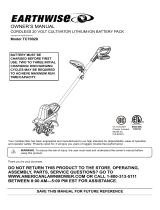 EarthWise TC70020 Manuel utilisateur
EarthWise TC70020 Manuel utilisateur
-
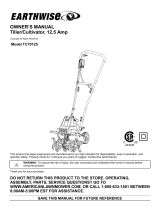 EarthWise TC70125 Manuel utilisateur
EarthWise TC70125 Manuel utilisateur
-
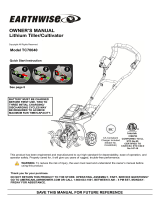 EarthWise TC70040 Le manuel du propriétaire
EarthWise TC70040 Le manuel du propriétaire
-
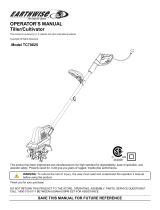 EarthWise TC70025 Manuel utilisateur
EarthWise TC70025 Manuel utilisateur
-
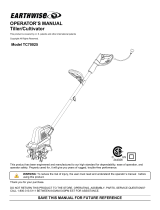 EarthWise TC70025 Le manuel du propriétaire
EarthWise TC70025 Le manuel du propriétaire
-
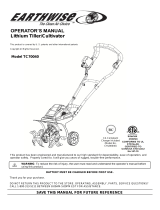 EarthWise TC70040 Manuel utilisateur
EarthWise TC70040 Manuel utilisateur
-
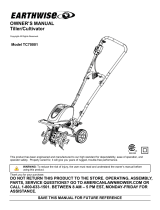 EarthWise TC70001 Le manuel du propriétaire
EarthWise TC70001 Le manuel du propriétaire
-
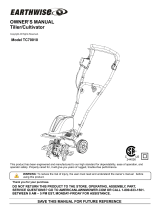 EarthWise TC70010 Le manuel du propriétaire
EarthWise TC70010 Le manuel du propriétaire
-
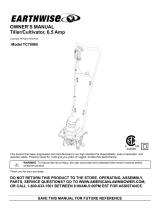 EarthWise TC70065 Le manuel du propriétaire
EarthWise TC70065 Le manuel du propriétaire
-
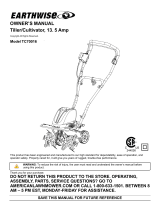 EarthWise TC70016 Le manuel du propriétaire
EarthWise TC70016 Le manuel du propriétaire







































